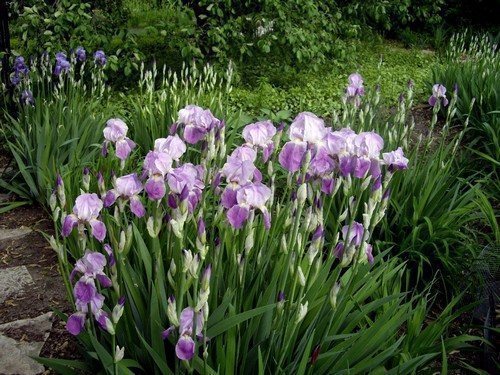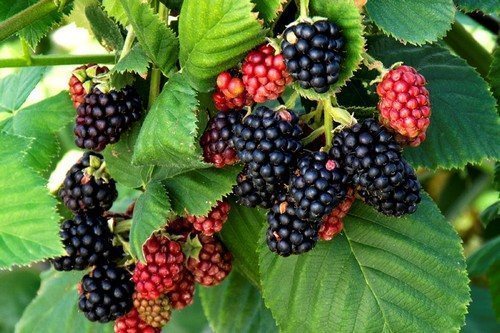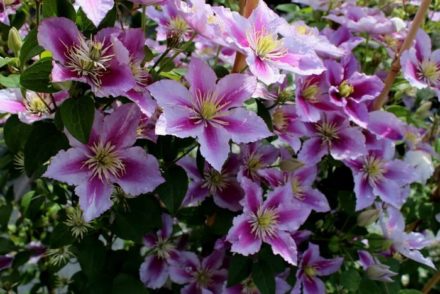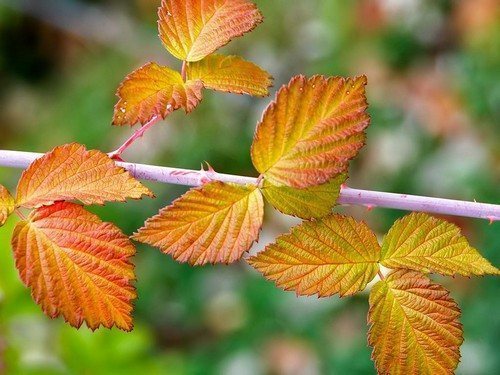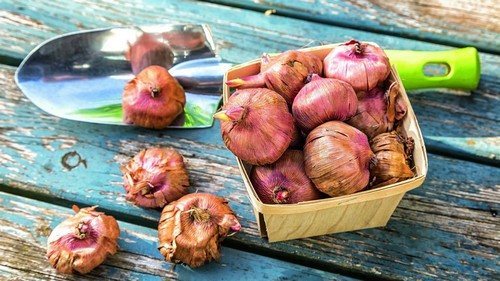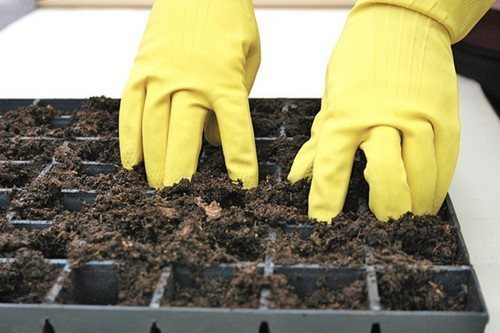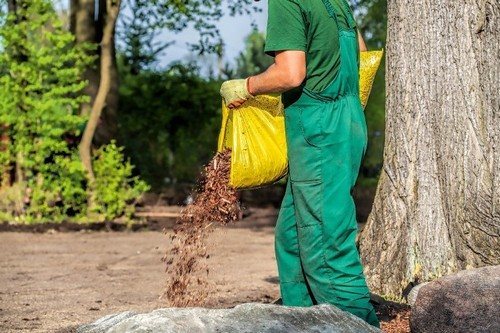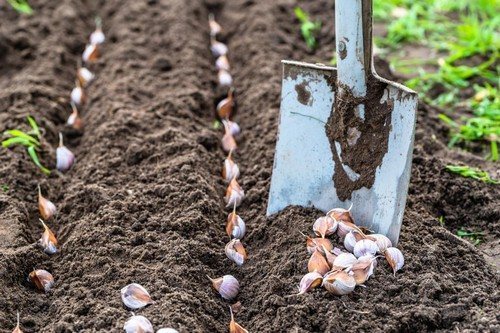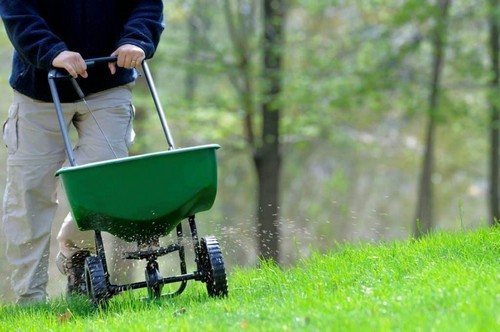One of the important activities when carrying out autumn work is preparing the flower garden for wintering. In order for plants to comfortably survive the winter and be able to delight you with their bright blooms in the spring, you need to take care of them in the fall.
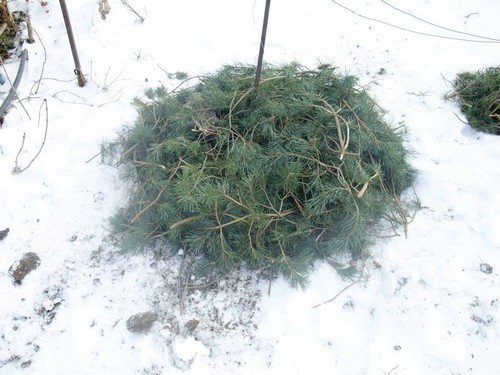
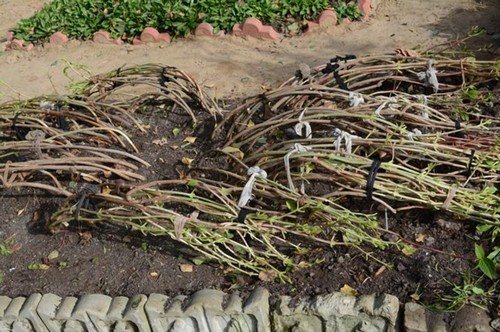
Agrotechnical works
You need to start working in the flower garden by cleaning the area. All debris, fallen leaves, and weeds are removed from the site. All this is taken out and burned. You cannot leave these residues as mulch, since pests often overwinter in fallen leaves.
After finishing the harvesting, it is necessary to dig up and loosen the soil around the perennials. If the soil is very dense or there are too many weeds in the flower garden, you can replace the top layer of soil with a new one.
Autumn watering of flowers depends on the weather. If it rains, watering is stopped. In dry weather, water once a week. Watering is carried out with warm water exclusively at the root. Moisture on the foliage can cause rot to develop. Last watering before winter
In order for perennials to successfully overwinter, they need to be fed. Nutritional supplements may include:
- organic fertilizers (mullein, chicken manure, horse manure):
- mineral fertilizers rich in phosphorus and potassium (nitroammofoska, superphosphate, diammofoska).
Nitrogen-containing fertilizers are not applied in the fall, as they stimulate plant growth, which is undesirable before winter.
Fertilizers are applied in the first half of September, not forgetting to water after fertilizing.
After feeding the flowers, they are treated against diseases and pests.This procedure is carried out in several stages:
- Remove all damaged stems. If the disease has spread to the root, the plant is uprooted. All affected parts of the bushes are burned.
- Flowers are sprayed with special preparations to prevent the spread of diseases.
- In the flowerbed between the plants, preparations are placed that repel or destroy harmful insects.
Treatment of bushes is carried out in dry weather. Then you can start replanting the bushes, dividing densely overgrown plants, planting new flowers, digging up and preparing tubers for storage.
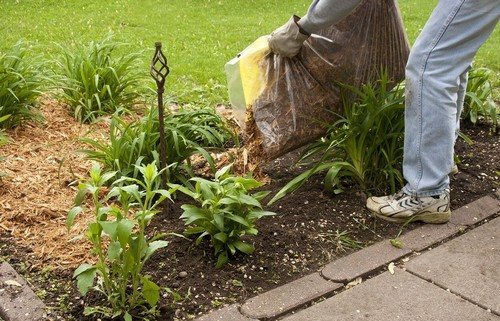
Excavation and preparation for storage
In almost every flower garden, among the perennial plants there are heat-loving crops that are not adapted to wintering. They are dug up and stored.
The first to be removed from the ground in early October are gladioli and begonias. After the first frost, cannes and dahlias are dug up.
Digging and preparation for storage is carried out as follows:
- Using a shovel or digging fork, carefully remove the bulbs, being careful not to damage them.
- Shorten the stems and root shoots by 2-3 cm.
- The bulbs are sorted, discarding diseased and damaged ones.
- The tubers are washed and placed in a disinfectant solution for half an hour.
- Lay the bulbs out to dry in a warm room for 2-3 weeks.
- Placed in a special room for storage.
When preparing for storage of cannas and root begonias, the earthen ball is not removed; they are stored with it. Dahlia stems are cut to ground level before digging. If the underground part of the tubers was damaged during the extraction process, the cut site is treated with charcoal or peat.Any room where the air temperature fluctuates between +3-+6°C is suitable for storage.
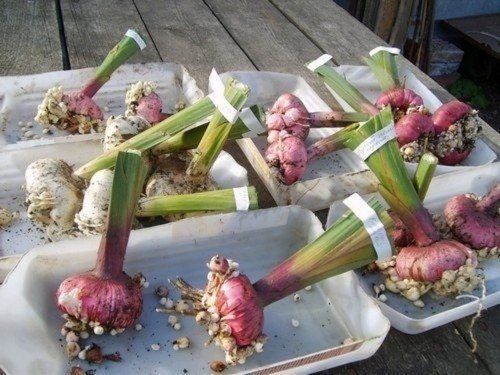
Planting and transplanting
In the fall, there is a need to replant something in a flower garden, divide it, or plant new varieties. For example, lilies do not grow in one place for more than two or three years. Therefore, they need to be transplanted to a new place. Dividing and replanting phlox and delphinium is also carried out in the fall. It is best to do this in the second half of September. You can defuse the daffodil plantings.
In the fall, the following perennials are planted in the flower garden:
- lupine;
- buzulnik;
- delphiniums;
- bells;
- primrose;
- swimsuits
Planting dates are determined depending on climatic conditions. In southern latitudes, planting can be carried out at the end of October. In regions where winters are colder, perennials are planted in September.
When planting annuals before winter, only cold-resistant varieties are chosen:
- fragrant mignonette;
- Iberis bitter;
- keeled chrysanthemum;
- Chinese aster;
- Chinese cloves;
- annual cornflower;
- officinalis calendula.
Planting is carried out after the first frost, when the soil freezes.
But before planting any plants, you should carefully prepare the soil: dig it up, feed it with all the necessary vitamins and microelements.
For bulbous plants, you need to choose the right planting time. Planting too early may sprout, but the first frost will destroy the plant.
When planting bulbs, you need to follow some rules:
- plant plants in a well-lit area;
- Before planting, fertilize the soil with a nutrient mixture, which includes peat (2 buckets), superphosphate (50 g), wood ash (100 g), ammonium nitrate (25 g);
- the bottom of the bulbs should look down when placed in the hole;
- place the bulb on its side to prevent moisture from accumulating in the central hole;
- planting material should be placed at a distance 4-5 times greater than their diameter.
Plants planted in autumn will have time to adapt and harden over the winter. In the spring, they will no longer need to get used to new conditions and therefore all the plants’ forces will be directed towards intensive growth and flowering.
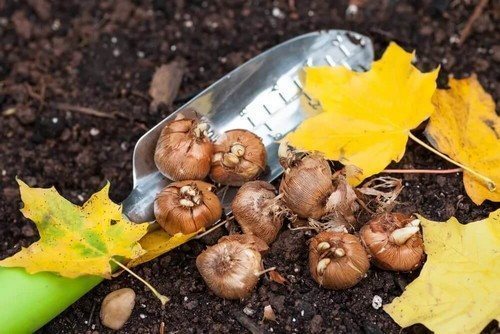
Working with annuals
Unlike perennials, for which special conditions are created for wintering, annual plants are removed from the flower garden as they fade.
Plant residues are taken off site and destroyed by burning. This is necessary in order to prevent infection of healthy flowers with viruses and fungi that can affect annuals. The only annual plant that can be used to improve the health and structure of the soil is marigolds. When preparing beds for spring planting in the fall, marigolds are embedded in the soil during digging.
Individual specimens of annuals are left in the flower bed to collect seeds. To do this, bags are made of paper or fabric into which seed pods of plants of the required varieties are placed. After the seeds are ripe, the bags are removed and placed in the refrigerator for storage, and the plant itself is removed.
After the flower garden is finally cleared of annuals, it needs to be prepared for spring planting. The soil is disinfected.For disinfection, use phytosporin or a 1% solution of manganese. Then the soil is fertilized with organic matter and mineral complexes (humus, compost or superphosphate). The acidity level of the soil is reduced with lime or dolomite flour. After the preparatory work is completed, the area is dug up.
Preparing perennial plants for winter
Perennial plants that remain to overwinter in open ground need protection from frost. To ensure the safety of plants, you need to:
- trim the crown in time;
- mulch the soil under the bushes;
- insulate the above-ground part of the flowers.
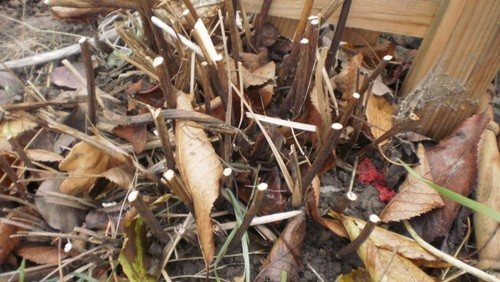
Pruning
One of the mandatory procedures when preparing perennial plants for winter is pruning the above-ground part. The optimal time for pruning is late October - mid-November. This procedure performs several functions:
- rids plants of harmful insects;
- reduces the risk of spreading fungi and viruses;
- simplifies the mulching and covering processes;
- preserves sprout buds, which accelerates the spring growth of young shoots.
When pruning, it is necessary to take into account the individual characteristics of flower crops.
For phlox, astilbe, pyrethrum, and peony, shorten the shoots, leaving a stump about 5 cm in size. Delphinium is cut to a height of 25 cm to prevent water from getting in and damaging the roots. For clematis, leave young first-year shoots about 20 cm long.
Rose bushes are thinned out, completely removing young growth and damaged shoots, buds, flowers, and shorten old branches to 30-35 cm.
Spirea is trimmed after all the leaves have fallen, cutting off a quarter of the faded stems at the root. Young shoots are not touched.This will help the bush form evenly in the coming season.
After the onset of stable cold weather, chrysanthemums, hosts, and asters are pruned at the root.
Pruning clematis depends on the type and variety. Irises are pruned 12-14 days before frost, shortening the foliage to 10 cm.
Heuchera, lavender, primrose, hosta, and periwinkle do not need pruning, since their above-ground part remains viable even in winter. Only sanitary pruning of stems damaged by diseases and pests is carried out.
All cuttings must be removed from the site and burned.
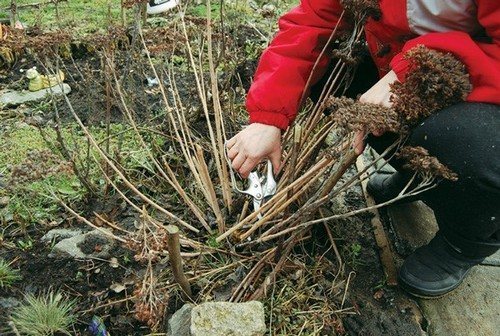
Mulching
Most often, the first frosts occur before snow falls. In this case, even frost-resistant plants can die if they are not mulched in time.
The mulch is prepared in advance and kept in a dry, warm place.
The following is used as mulching material:
- Rotted humus, compost or peat. They perform 2 functions: protect plant roots from frost and nourish the soil. This mulch frees the flowers from additional feeding in the spring.
- Garden soil, mowed green manure, moss mixed with each other.
- Conifer needles are suitable for bushes growing in acidic soils.
It is not recommended to mulch perennials with fresh sawdust or straw. The sawdust needs to rest. Only then will they be suitable for mulching. Straw is undesirable because of the rodents it attracts. First they eat the straw, and then turn their attention to the plants.
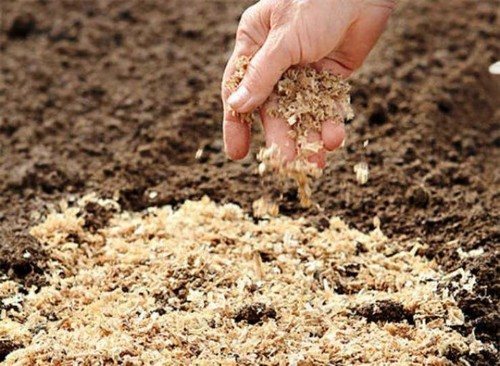
Shelter
Preparations for insulating the flower garden begin in mid-October. Frosts can strike at any moment, and it will take some time to prepare the shelter.
The timing of shelter depends on the weather.
There are several types of shelter:
- Wet - the bushes in the flowerbed are covered with soil 30-40 cm thick. This method is suitable for roses, clematis, grapes.
- Dry - used to insulate vines. To do this, they are bent to the ground, sprinkled on top with a 20-centimeter layer of dry sawdust or leaves and covered with polyethylene film. Some varieties of clematis and actinidia are covered in this way.
- Airy, preventing plants from touching the shelter. Tripod-shaped slats are installed around the plant and covered with film or lutrasil. But this method has its drawbacks. In a warm winter, the plants can rot or "wake up" ahead of time. Therefore, it is better to attach plywood to the slats on top and stretch the film, digging its edges with earth. The plywood will act as a roof, protecting the plants from sunlight. Air-dry - a frame is constructed from support pegs and plank flooring, which is covered with polyethylene film on top and covered with a layer of dry material from sawdust, hay, leaves. Most often, such a shelter is used for roses,
- rhododendrons . To provide air access to plants, a tube leading outward is placed under the film. Some perennials (irises, poppies, asters, phlox, delphinium) do not need shelter. Mulching is enough for them.
The best shelter for flowers is snow cover. Therefore, you need to take care of materials that retain snow in advance. You can hold snow with the help of spruce branches, shoots of berry bushes, brushwood. They are laid out on areas of the flowerbed free of plants.
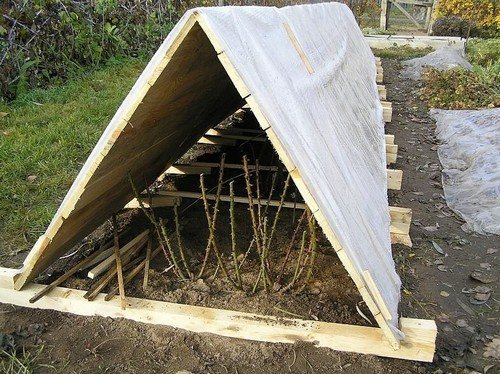
Carrying out all the necessary measures when preparing the flowerbed for winter will help the plants safely survive the frosts and delight you with their lush flowering in the spring. I like
I don't likeWet - bushes in a flower garden are covered with soil 30-40 cm thick. This method is suitable for roses, clematis, and grapes.


